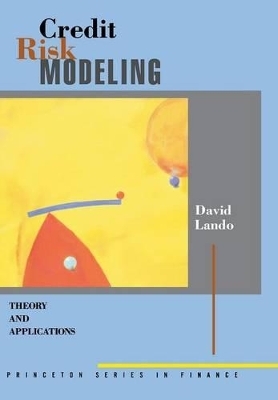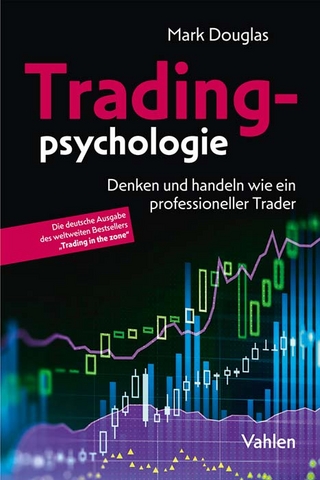
Credit Risk Modeling
Princeton University Press (Verlag)
978-0-691-08929-4 (ISBN)
The book emphasizes models for pricing as well as statistical techniques for estimating their parameters. Applications include rating-based modeling, modeling of dependent defaults, swap- and corporate-yield curve dynamics, credit default swaps, and collateralized debt obligations.
David Lando is Professor of Finance at the Copenhagen Business School. He is an associate editor of three finance journals and a member of Moody's Academic Advisory and Research Committee.
Preface xi 1. An Overview 1 2. Corporate Liabilities as Contingent Claims 7 2.1 Introduction 7 2.2 The Merton Model 8 2.3 The Merton Model with Stochastic Interest Rates 17 2.4 The Merton Model with Jumps in Asset Value 20 2.5 Discrete Coupons in a Merton Model 27 2.6 Default Barriers: the Black-Cox Setup 29 2.7 Continuous Coupons and Perpetual Debt 34 2.8 Stochastic Interest Rates and Jumps with Barriers 36 2.9 A Numerical Scheme when Transition Densities are Known 40 2.10 Towards Dynamic Capital Structure: Stationary Leverage Ratios 41 2.11 Estimating Asset Value and Volatility 42 2.12 On the KMV Approach 48 2.13 The Trouble with the Credit Curve 51 2.14 Bibliographical Notes 54 3. Endogenous Default Boundaries and Optimal Capital Structure 59 3.1 Leland's Model 60 3.2 A Model with a Maturity Structure 64 3.3 EBIT-Based Models 66 3.4 A Model with Strategic Debt Service 70 3.5 Bibliographical Notes 72 4. Statistical Techniques for Analyzing Defaults 75 4.1 Credit Scoring Using Logistic Regression 75 4.2 Credit Scoring Using Discriminant Analysis 77 4.3 Hazard Regressions: Discrete Case 81 4.4 Continuous-Time Survival Analysis Methods 83 4.5 Markov Chains and Transition-Probability Estimation 87 4.6 The Difference between Discrete and Continuous 93 4.7 A Word of Warning on the Markov Assumption 97 4.8 Ordered Probits and Ratings 102 4.9 Cumulative Accuracy Profiles 104 4.10 Bibliographical Notes 106 5. Intensity Modeling 109 5.1 What Is an Intensity Model? 111 5.2 The Cox Process Construction of a Single Jump Time 112 5.3 A Few Useful Technical Results 114 5.4 The Martingale Property 115 5.5 Extending the Scope of the Cox Specification 116 5.6 Recovery of Market Value 117 5.7 Notes on Recovery Assumptions 120 5.8 Correlation in Affine Specifications 122 5.9 Interacting Intensities 126 5.10 The Role of Incomplete Information 128 5.11 Risk Premiums in Intensity-Based Models 133 5.12 The Estimation of Intensity Models 139 5.13 The Trouble with the Term Structure of Credit Spreads 142 5.14 Bibliographical Notes 143 6. Rating-Based Term-Structure Models 145 6.1 Introduction 145 6.2 A Markovian Model for Rating-Based Term Structures 145 6.3 An Example of Calibration 152 6.4 Class-Dependent Recovery 155 6.5 Fractional Recovery of Market Value in the Markov Model 157 6.6 A Generalized Markovian Model 159 6.7 A System of PDEs for the General Specification 162 6.8 Using Thresholds Instead of a Markov Chain 164 6.9 The Trouble with Pricing Based on Ratings 166 6.10 Bibliographical Notes 166 7. Credit Risk and Interest-Rate Swaps 169 7.1 LIBOR 170 7.2 A Useful Starting Point 170 7.3 Fixed-Floating Spreads and the "Comparative-Advantage Story" 171 7.4 Why LIBOR and Counterparty Credit Risk Complicate Things 176 7.5 Valuation with Counterparty Risk 178 7.6 Netting and the Nonlinearity of Actual Cash Flows: a Simple Example 182 7.7 Back to Linearity: Using Different Discount Factors 183 7.8 The Swap Spread versus the Corporate-Bond Spread 189 7.9 On the Swap Rate, Repo Rates, and the Riskless Rate 192 7.10 Bibliographical Notes 194 8. Credit Default Swaps, CDOs, and Related Products 197 8.1 Some Basic Terminology 197 8.2 Decomposing the Credit Default Swap 201 8.3 Asset Swaps 204 8.4 Pricing the Default Swap 206 8.5 Some Differences between CDS Spreads and Bond Spreads 208 8.6 A First-to-Default Calculation 209 8.7 A Decomposition of m-of-n-to-Default Swaps 211 8.8 Bibliographical Notes 212 9. Modeling Dependent Defaults 213 9.1 Some Preliminary Remarks on Correlation and Dependence 214 9.2 Homogeneous Loan Portfolios 216 9.3 Asset-Value Correlation and Intensity Correlation 233 9.4 The Copula Approach 242 9.5 Network Dependence 245 9.6 Bibliographical Notes 249 Appendix A: Discrete-Time Implementation 251 A.1 The Discrete-Time, Finite-State-Space Model 251 A.2 Equivalent Martingale Measures 252 A.3 The Binomial Implementation of Option-Based Models 255 A.4 Term-Structure Modeling Using Trees 256 A.5 Bibliographical Notes 257 Appendix B: Some Results Related to Brownian Motion 259 B.1 Boundary Hitting Times 259 B.2 Valuing a Boundary Payment when the Contract Has Finite Maturity 260 B.3 Present Values Associated with Brownian Motion 261 B.4 Bibliographical Notes 265 Appendix C: Markov Chains 267 C.1 Discrete-Time Markov Chains 267 C.2 Continuous-Time Markov Chains 268 C.3 Bibliographical Notes 273 Appendix D: Stochastic Calculus for Jump-Diffusions 275 D.1 The Poisson Process 275 D.2 A Fundamental Martingale 276 D.3 The Stochastic Integral and Ito's Formula for a Jump Process 276 D.4 The General Ito Formula for Semimartingales 278 D.5 The Semimartingale Exponential 278 D.6 Special Semimartingales 279 D.7 Local Characteristics and Equivalent Martingale Measures 282 D.8 Asset Pricing and Risk Premiums for Special Semimartingales 286 D.9 Two Examples 288 D.10 Bibliographical Notes 290 Appendix E: A Term-Structure Workhorse 291 References 297 Index 307
| Erscheint lt. Verlag | 21.6.2004 |
|---|---|
| Reihe/Serie | Princeton Series in Finance |
| Zusatzinfo | 45 line illus. 30 tables. |
| Verlagsort | New Jersey |
| Sprache | englisch |
| Maße | 152 x 235 mm |
| Gewicht | 624 g |
| Themenwelt | Mathematik / Informatik ► Mathematik ► Angewandte Mathematik |
| Betriebswirtschaft / Management ► Spezielle Betriebswirtschaftslehre ► Bankbetriebslehre | |
| ISBN-10 | 0-691-08929-9 / 0691089299 |
| ISBN-13 | 978-0-691-08929-4 / 9780691089294 |
| Zustand | Neuware |
| Haben Sie eine Frage zum Produkt? |
aus dem Bereich


